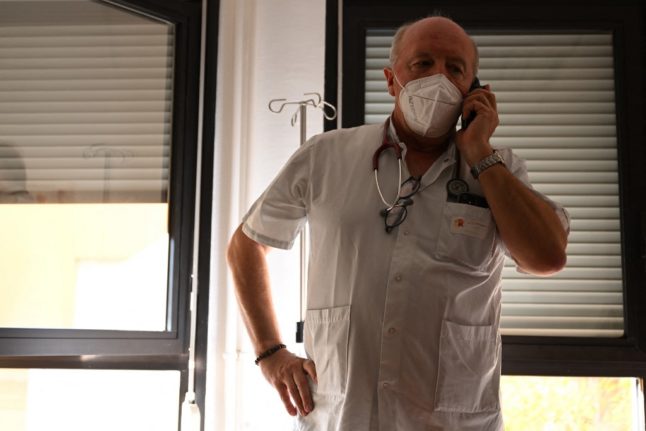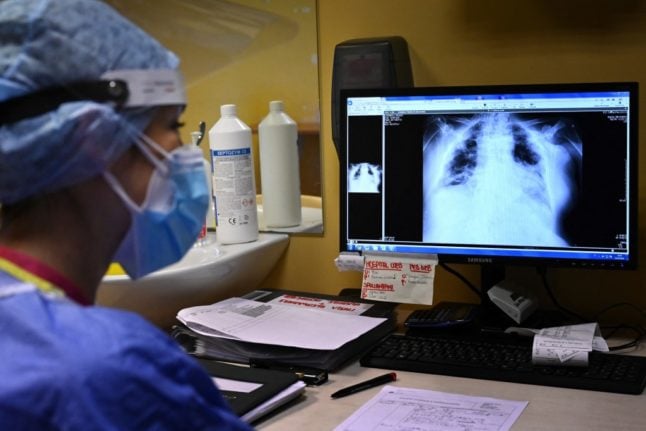Making a doctor’s appointment is usually thought of as a fairly uncomplicated task but everything gets a little harder when you’re in a foreign country.
And in Italy, the process can turn out to be surprisingly tricky, especially if you’ve just relocated to the country and are not yet familiar with how the Italian healthcare system (Servizio Sanitario Nazionale, or SSN) works.
READ ALSO: Who can register for national healthcare in Italy?
On top of that, Italian doctors and other healthcare staff are rarely fluent in English and only very few sections of the SSN’s website provide information in languages other than Italian.
So to make things a little easier, here’s what you need to know about making a doctor’s appointment in Italy.
Who can make an appointment to see the doctor?
Only people who hold a valid Italian health card (tessera sanitaria) or an equivalent, i.e. a European Health Insurance Card (EHIC) or a UK Global Health Insurance Card (GHIC), can access public health services, including visits to a general practitioner or family doctor (medico di base).
For emergency treatment, the Italian health service provides care to anyone in need regardless of their nationality or immigration status and without asking for upfront payment.
In a medical emergency, call 118 for an ambulance or head to the emergency ward (pronto soccorso) of the nearest hospital.
READ ALSO: Who to call and what to say in an emergency in Italy

How to register with a doctor
In order to make an appointment (visita) with a general practitioner (medico di base) within the SSN, you must first be registered with that particular doctor.
While in some countries you may call the local doctor’s office and book an appointment with any doctor on duty, that is not how things usually work in Italy and you’ll be under the care of one particular professional.
However, registering with an Italian doctor isn’t nearly as straightforward as it should be.
Firstly, patients are expected to view the list of doctors operating within the area covered by their local health authority (Azienda Sanitaria Locale, ASL).
Though in some cases these lists can be found online, in others residents will have to directly ask their ASL to be sent a copy, or visit the ASL office in person to see it.
Then, taking the location and office hours of the listed professionals into account, patients are asked to pick the doctor that’s best suited to their needs and communicate their choice to the ASL.
READ ALSO: Tessera sanitaria: How do you apply for or renew your Italian health card?
While in some areas this can be done online, most ASLs ask that patients turn up in person at their Scelta e Revoca (Choosing and Cancelling) offices and show an ID card, a valid Italian health card or equivalent (EHIC or GHIC) and a certificate of residence.
Registrations are generally processed immediately and the doctor’s contact info and booking details are emailed to the patient right after.
How to book an appointment
Once you’re registered with a family doctor or GP, you can go ahead and book your first appointment.
A booking can generally be made via phone, email or, in some cases, online.
However, as previously mentioned, healthcare staff, including receptionists, are rarely fluent in English, so email or online bookings might be the better options if you’re not really proficient in Italian – if this option is available.

During the first appointment, patients are usually handed a form to fill out with general information about themselves and their overall health.
Due to these formalities, the first appointment might last a little bit more than normal appointments, which are usually around 15 to 20 minutes.
READ ALSO: Five essential facts about Italy’s public healthcare system
It’s also worth noting that, though they provide patients with a set appointment time, Italian doctors’ clinics tend to run a little late, so be prepared for a wait once you arrive.
All consultations with an Italian GP, including the first appointment, are free of charge.
Referral to specialists
GPs can refer patients to a specialist for further diagnostic exams or medical procedures.
However, unlike in other European countries, people choosing to see a specialist through the SSN cannot select the doctor they will be referred to as they will be given the earliest available appointment.
The referral comes in the form of a red prescription (ricetta rossa) with letters P, D, B and U indicating the different levels of urgency associated with the consultation – P marks the lowest priority level, whereas D is for consultations that must take place within 72 hours from the time of prescription.
The ricetta rossa allows patients to book their appointments online, in person or over the phone by calling the relevant Regional Central Booking Office (Centro Unico di Prenotazione Regionale, CUP).

Again, foreign nationals with a poor command of Italian may find that online bookings are the best available option given that most operators are not fluent in English.
Private doctors
As in other European countries, Italian residents can choose to see private GPs or specialists.
Private healthcare is of course provided at a fee – typically anything from €40 to €160, depending on the type of service required – and, in most cases, fees must be paid upfront.
Unlike public health authorities, private providers do not require patients to have a tessera sanitaria or a valid equivalent.
Aside from the above distinctions however, booking an appointment in the private sector is no different than booking one within the SSN, with patients being allowed to book via phone, email or a designated online platform.
If you’re looking for an English-speaking doctor, the US Embassy in Rome and the Consulates General in Milan, Florence and Naples provide lists of English-speaking professionals available for private consultation. These can be downloaded here.
The UK government provides a similar list.
Essential vocabulary and useful sentences
- SSN (Servizio Sanitario Nazionale) – National health system
- ASL (Azienda Sanitaria Locale) – Regional health unit
- Medico di base – General practitioner
- Ricetta – Prescription
- Visita – Appointment
- Specialista – Specialist doctor
- Farmaco – Medicine
- When booking by email or phone, a useful phrase is: Vorrei fissare una visita alle ore X di X (I would like to schedule an appointment for [day] at [time]).
- Should you need to cancel the appointment, you could say: Purtroppo, devo cancellare la visita.
- To ask to reschedule it, you could say: Sarebbe possibile spostare la visita?
To describe your illness, you can check out our terminology guide for the most common ailments.



 Please whitelist us to continue reading.
Please whitelist us to continue reading.
Member comments